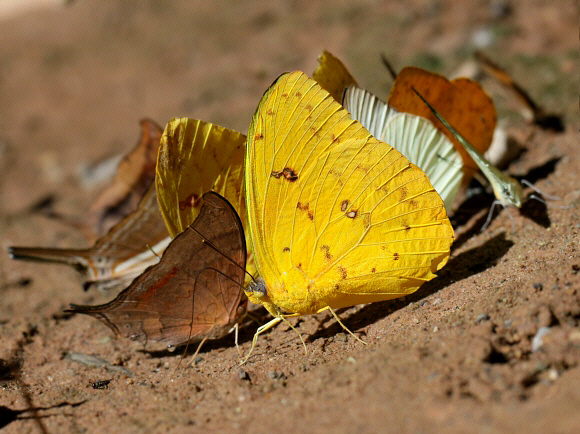
Introduction
The subfamily Coliadinae includes the Sulphurs, Grass Yellows, Clouded Yellows and Brimstones. In the neotropical region there are about 70 species.
The genus Phoebis comprises of 8 species, most of which are strongly migratory in behaviour. They are widely distributed across the region, with 3 exceptions: avellaneda which is endemic to Cuba, editha from Hispaniola, and the Ecuadorian species bourkei.
All Phoebis species are sexually dimorphic. Males are bright yellow above, with a thick patch of matt androconial scales around the forewing cell. Females are paler on both wing surfaces.
Phoebis philea is found from Mexico to Peru, and also occurs on many of the Caribbean islands.
Habitats
As with other Phoebis species, philea is highly migratory in behaviour and can thus be found in a wide variety of habitats including primary and secondary rainforest, deciduous woodland, scrubby grassland and farmland; at altitudes between sea level and about 1500m.
Lifecycle
The eggs are yellow and laid singly on young leaves of Cassia (Caesalpinaceae). The larva when fully grown is pale green and covered with greenish-black dots. There is a broad straw-coloured band along the sides, above which is a series of short blackish vertical bands. The pupa is pinkish, with the wing venation picked out in pale green, and a prominent pale green lateral line.
Adult behaviour
Males are usually seen in lower numbers than sennae or argante, but can often be found amongst mud-puddling aggregations of other Phoebis species. These insects often form very tightly packed groups of dozens of individuals. If alarmed the entire group erupts spontaneously into the air and swirls about for several minutes afterwards in a seething mass of fluttering yellow wings.
The paler females are seen less often, and are usually observed in flight, or when nectaring at red flowers such as Lantana and Impatiens. There is no courtship ritual – the females are intercepted in mid-flight and forced to the ground where copulation takes place immediately.

